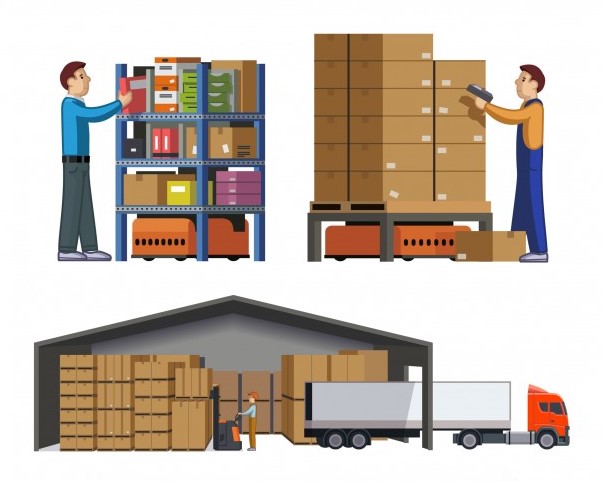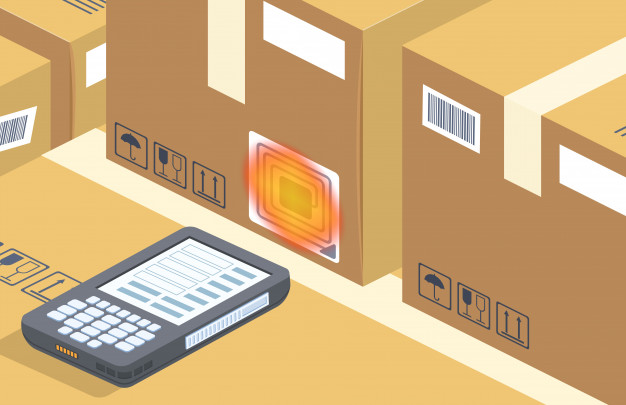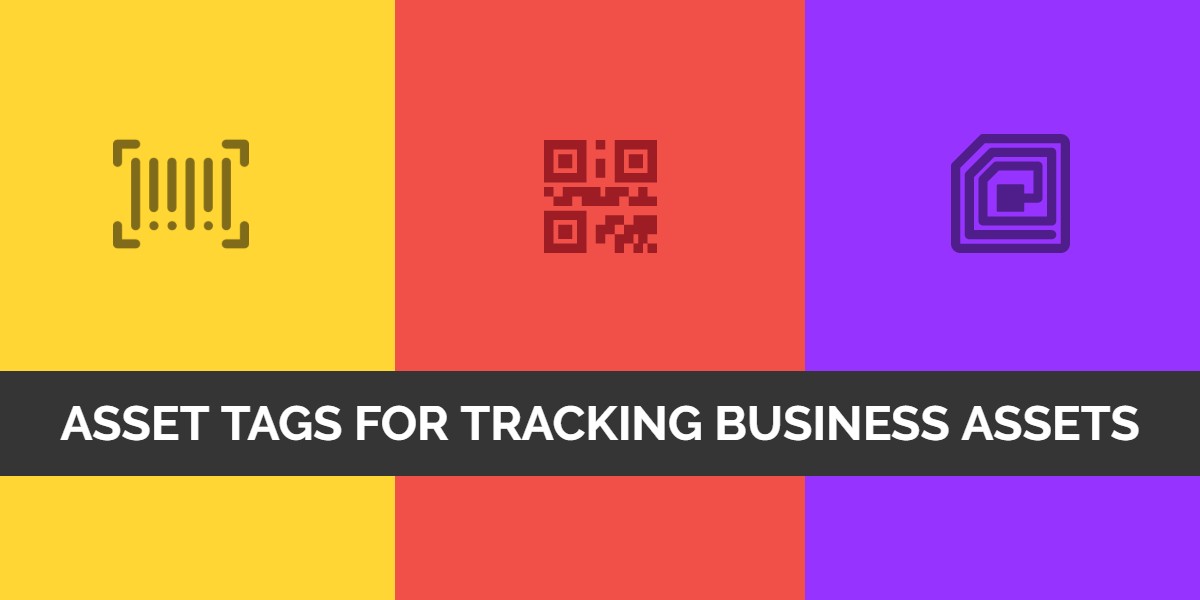What are Asset tags and how should you use them?
How often do you use the office printer? Or better yet, the company laptop? Businesses all over the world use several different types of equipment to carry out key business tasks. So, with so many employees and a vast inventory base in play, how do firms control utilization?
The short answer is with asset management. Companies tag their Assets with unique serial numbers or barcodes and use these to track them so that they can be located quicker. These adhesive labels include the company logo for easy identification. Moreover, they come in several different sizes, types, and material so you can find the right fit for all your Assets, including small tools or uneven surfaces on items.
Tagging business Assets serves multiple purposes. Chief of these is streamlining daily work operations by:
- Tracking equipment: Labels like barcode tags let you track equipment as it moves from the tool crib to the project site or simply from one room to another. This is possible when you check an Asset in and out every time an employee needs it.
- Gaining inventory control: Asset tags enable companies to perform one of the most fundamental tasks at hand. By tracing different tags, organizations can keep a tab on stock levels throughout the year.
- Utilizing MRO information: A successful business environment works to minimize Asset breakdowns. To do this, firms often use labels to monitor MRO (maintenance, repair and overhaul) schedules. A simple scan can reveal service instructions or warranty details for timely refurbishment.
Where are Asset tags most commonly used?

Asset tags are used across several industries. Businesses of all natures and sizes benefit from the efficiency that Asset tracking offers.
- Healthcare: Biomedical engineers use tags to monitor hospital equipment and medical devices. Such a system enables healthcare centers to run efficient and cost-effective daily operations.
- Education: Schools and colleges use labels to keep Asset utilization under check. This can include audiovisual equipment and IT devices like tablets and laptops.
- Warehousing: Asset labels are a great way to track Asset locations in the warehouse industry. Warehouses use these labels to control inventory stocks and streamline overall workflows.
- Utility: Utility companies benefit from specially designed Asset tags capable of withstanding hard weather conditions and rough usage. Clearly-labeled utility Assets can be easily identified to schedule maintenance sessions and avoid service disruptions.
Why is labeling Assets important?
The first step to streamlining business workflows is to develop a robust asset management strategy. Doing so enables companies to control utilization – from procurement to disposal. Additionally, it also enables you to record and store all your data on one central platform. But, how does all of this help?
- Access a comprehensive database depicting all essential Asset details.
- Eliminate human error and manual labor with the help of automated scans.
- Improve collaboration and cross-sharing across departments.
- Make it easier to run audits for compliance with regulatory bodies.
- Standardize Asset identification so employees can easily locate Assets.
- Lower the risk of misplacement and theft, springing from poor tracking practices.
- Run lifecycle management with accurate depreciation calculation.
How do you decide which Assets to label?

Knowing which Assets to track is critical since tracking each and every piece of equipment that you own is tedious and inconvenient. Shortlist Assets according to the following criteria:
- Movable Assets: Movable Assets have a high risk of misplacement and thus, should be tracked. Tag office equipment that is moved across locations, like IT devices and appliances. Additionally, label kits or bundles for equipment travels so these can easily be checked out for offsite projects. Such practices enable firms to hold the team accountable for any incidents of missing equipment.
- Fixed Assets: Fixed Assets like office furniture, machines and tools, need to be serviced to lower downtime. Label these so you can plan service sessions in advance without a hassle. This helps pull down instances of serious or unexpected breakdowns in the future.
- High-value Assets: Most organizations struggle with security when it comes to high-value items. For this reason, companies label expensive equipment. Add a ‘Property of <company name>’ attribute to the label to deter swiping attempts.
Furthermore, be sure to filter out items that don’t need to be tagged. For instance, tracking consumable items is a waste of resources. Similarly, there are some Assets which lose value if the surface is tampered with. Therefore, take these factors into account when choosing which Assets to label!
How to choose the right type of tag for your Asset?
The key to successful Asset tracking is choosing the correct type of label for your equipment. For this, you need to know all the different options available, and how these can be customized to cater to your requirements.
- Barcodes: Barcodes are the most widely used Asset tags and can be categorized into Code 39 and Code 128. Typically recognized as 1D barcodes, code 39 is an alpha-numeric barcode that also uses seven special characters. On the other hand, Code 128 uses all 128 ASCII characters. Consequently, Code 128 is more precise, space-efficient and less prone to problems when scanned.
- QR Codes: A little advanced from 1D barcodes, QR codes have the capacity to hold much more information. They consist of tiny black modules arranged across a square space and can be scanned easily by a smartphone camera.
- RFID: RFID Asset tags are a good option for organizations that use expensive equipment and are willing to experiment with high technology. These labels transmit information in the form of radio waves and don’t have to be in the reader’s sight to be scanned.
- GPS: GPS tags are the most advanced on this list and enable companies to read and record locations in real-time. These detailed insights also make them expensive and difficult to set up.
Okay, but which material should I go for?
Another thing to note is the label material! If barcode or QR codes are your pick, you need to select label types according to the needs of your Assets. Here are a few commonly used types of tags:
- Foil Asset labels: Foil Asset labels are best for tracking office equipment like computers and machinery. These are made up of aluminum and are flexible and adhesive enough to stick to uneven surfaces and both indoor and outdoor equipment. They are also able to withstand abrasion, chemicals and harsh weather conditions since the graphics are sealed below the surface of the label. These properties make this type the most widely used Asset label.
- Polyester Asset labels: This type of Asset label is designed for frequently used items like office furniture, fixtures and equipment. The permanent adhesive clings to these and remains that way until the items are disposed of. Polyester labels typically come with an over-laminate which protects the graphics from mild chemicals and scuffing.
- Tamper evident labels: Companies working with high-value items need to implement a strict security mechanism. To protect expensive equipment from theft and to preserve its authenticity, place tamper evident labels at device openings. Now, to access the insides of a device, a person will have to pry these labels off. These labels flag such an attempt by displaying ‘VOID’ under the tag. Such a sign signals unauthorized usage of Assets which should be dealt with immediately.
What are the industry best practices?

After selecting the most appropriate material, decide what information you should show on the Asset label. Limited label space forces firms to be strategic, concise and creative.
Add an identification number on the tag in the event that a scanner is malfunctioning. You can even add modifications like location initials or department codes.
Furthermore, certain organizations will also add the geo-location or IP address on Asset tags. This comes in handy when dealing with multiple tools being checked in and out on a daily basis.
Some companies also choose to stick to manufacturers’ labels to save time and effort spent on tagging. This might not work in certain cases since commercially printed labels aren’t personalizable. Moreover, commercially procured labels might not be readable to the company scanner or compatible with the management system. So, we recommend steering clear of these.
1. Design precise IDs
Most Assets use the caption ‘Property of’ to denote company ownership. However, this is not necessary if you have the company logo on the label. Other examples of captions on Asset labels include:
- Leased by
- Installed by
- Warranty label
- For service, call
- Registration/lot number
- Service date
In addition to tamper-evident tags, some companies add text that reads ‘Reward if found’ or ‘If found, call’ to their expensive assets. These are a lifesaver in case of misplacement or theft. Similarly, captions like ‘Installed by’ and ‘For service, call’ are suitable for assets which require periodic maintenance. Clearly labeled asset tags allow employees to contact the manufacturer right away to get the desired services in time.
2. Choose an appropriate sequential system
When it comes to designing asset labels, the simplest method to use is sequential numbering. However, some companies resort to complex methods and add more details. For instance, if your employees travel extensively for work projects, then you can use location codes. An example would be LA for assets located in Los Angeles. To add on to this, you can also include device specific codes like P01 for iPads. The final code looks like LAP01 which immediately tells employees about the asset and its location.
3. Color-code your tags
One way to customize asset tags is to color-code prefixes. This way, multiple colors can be used to denote particular departments or asset types. Doing so helps avoid confusion over the same kind of equipment owned by different departments. For instance, the admin department can use red tags while the marketing department can use green tags for all of its assets. Colored labels are easy to recognize and work well with large corporations.
4. Add customized details
There is no set rule to follow for labeling your assets. You can lay down your own specifications based on the nature of your business. Take the example of schools, where assets are allocated for various projects. Teachers can add activity details on the label to simplify checkouts. For instance, accessories for art class can have codes like ART01. Such information helps to streamline workflows for better outcomes.
5. Ensure scanner compatibility

Once you’ve chosen the types of tags you want to use, ensure that they are in sync with the current scanner technology. To do this, companies often use cloud-based software to help them design appropriate barcode labels.
Get the most out of your asset tags with tracking software
Asset labels are designed to help organizations track utilization and deployment. With various options to choose from, the most popular one remains the simple barcode. But the process doesn’t stop here. To optimize workflows, it is critical to draft guidelines for asset tagging.
Depending upon the nature of the industry, companies can add various details on the tag. Common examples include manufacturer’s information, maintenance dates and location codes. Taking it one step further, some firms choose to customize labels to make them more precise and accessible.
However, the key to maximizing rate of return on assets is to deploy tracking software. Such a system makes use of asset labels to record and store accurate information. You can also use the software to run asset performance reports as required. This allows you to identify weak areas and work on them to boost equipment ROIs.
About EZOfficeInventory
EZOfficeInventory is the leading asset tracking software that enables you to manage all your business assets, services, users, and much more. It also comes with a powerful Label Designer that allows you to design your own labels and use data from the software! Try out our free trial today!







